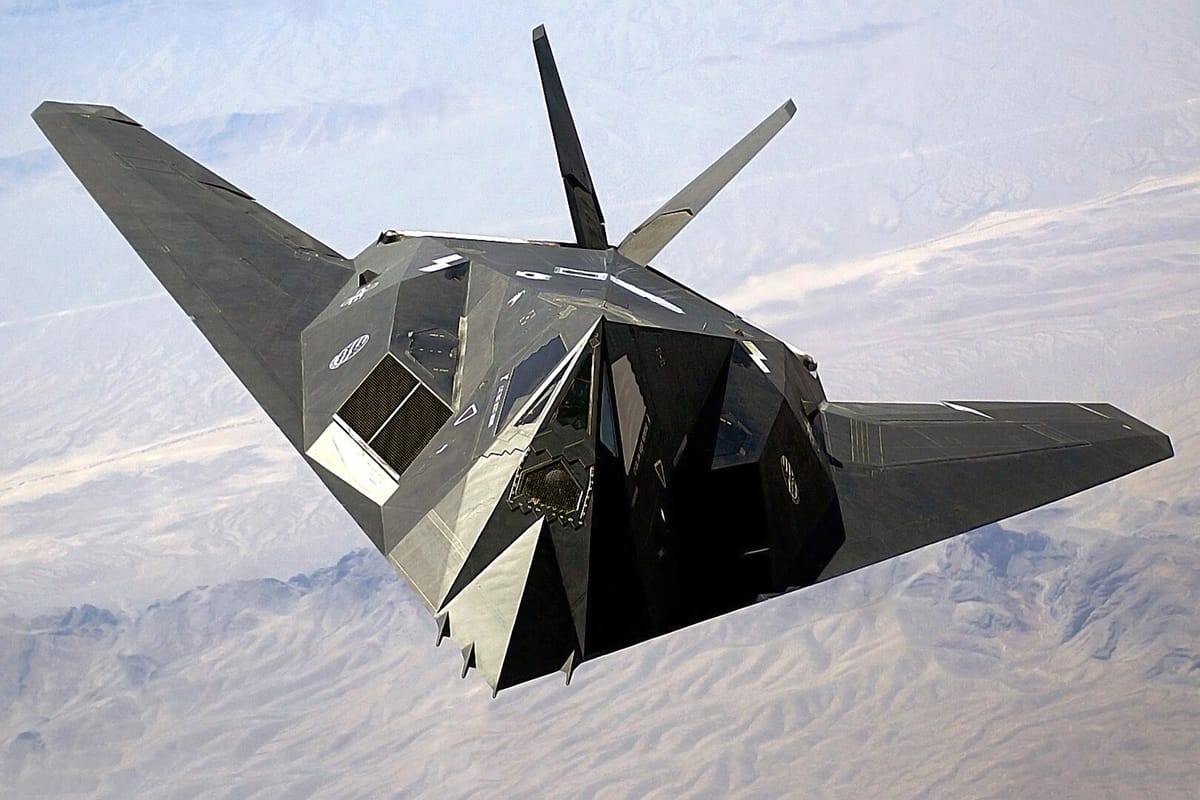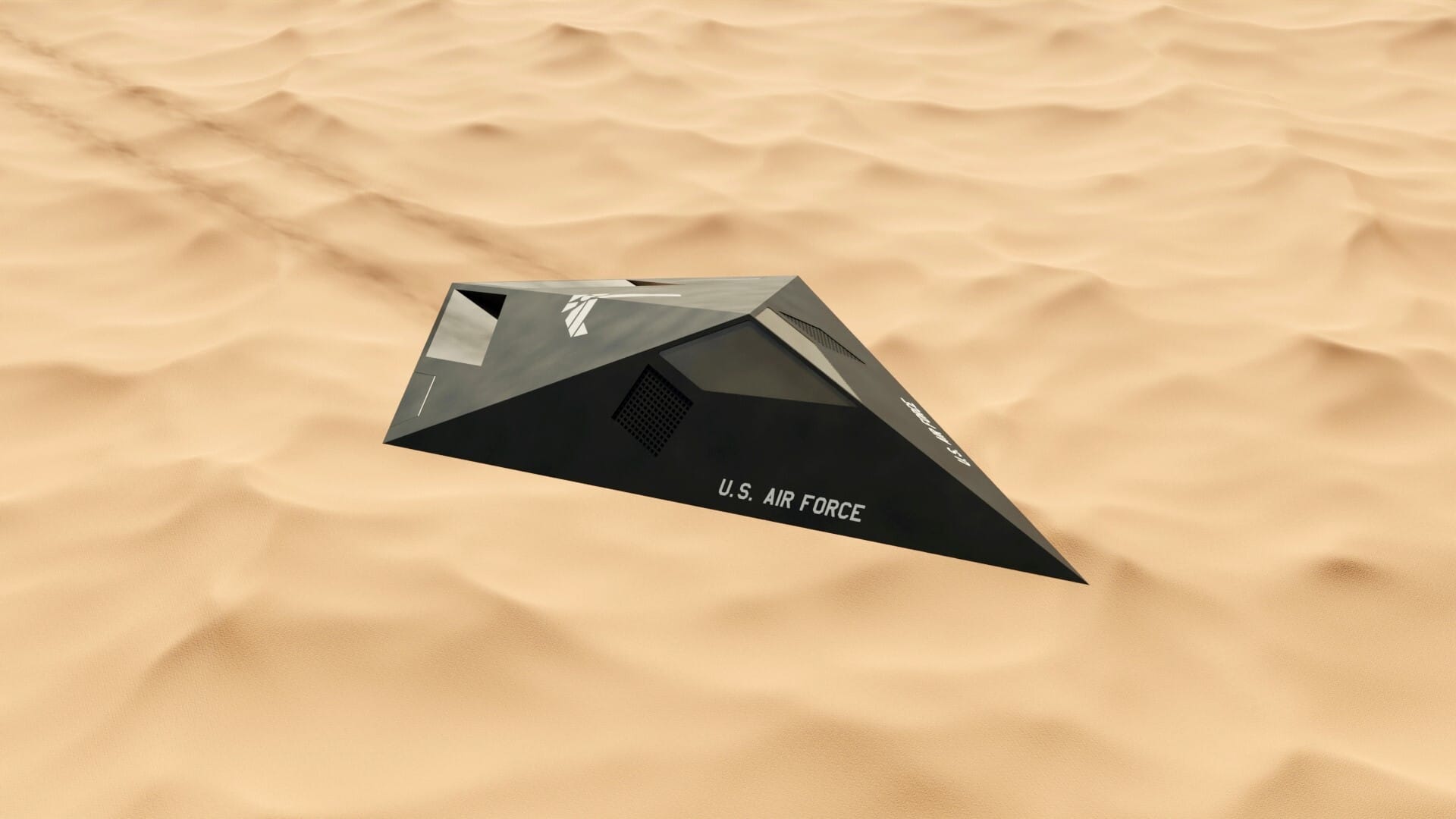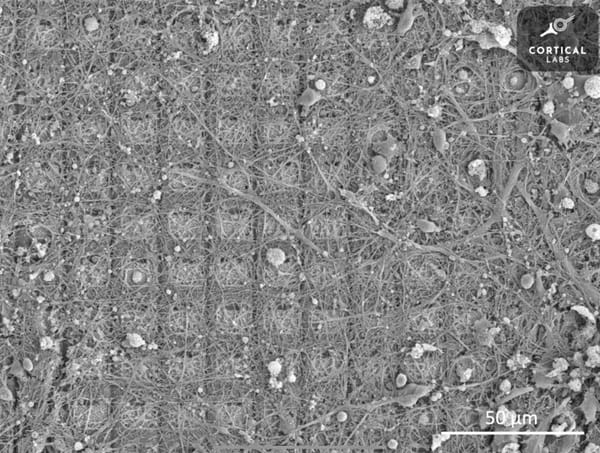The Lockheed F-117 Nighthawk - A Revolution in Aerial Combat
The F-117 Nighthawk redefined aerial combat with groundbreaking stealth technology, overcoming extreme engineering challenges to become a precision bomber that evaded both radar and infrared detection.

Although officially retired from service by the United States Air Force (USAF) in 2008, the F-117 Nighthawk remains one of the most significant milestones in aeronautical engineering of the 20th century. Evolving from a prototype dubbed as "The Hopeless Diamond" to becoming an essential weapon in the Gulf War, where it destroyed over 1,600 high-value targets in Iraq. The F117 proved itself to be a technological marvel, pushing the boundaries of what was previously thought possible in aircraft design.
The origins of the project can be traced back to the rising threat of Soviet radar-guided missiles, used notably in the Yom Kippur War. These missiles destroyed some of America's most advanced aircraft with ease, costing the USAF millions of dollars. The effectiveness of these missiles were demonstrated through Israel losing 109 American attack aircraft in just 18 days during the Yom Kippur War, mostly due to SAMs (Surface-to-Air Missiles). The USAF therefore concluded that the solution to this problem was stealth. This, in turn, led to the Defence Advances Research Projects Agency (DARPA) to issue a contract to Lockheed Skunk Works (Lockheed's Advanced Development Projects) to build and test two stealth aircraft with a budget of $35 million for both aircraft. Although both prototypes ultimately crashed, the tests were deemed a success, resulting in a contract being awarded to Lockheed Skunk Works to develop the F-117 in 1978.
While stealth was not a novel concept at the time, a major breakthrough in the technology came in the 1970s when Denys Overholser, a stealth engineer at Lockheed, discovered a paper by Soviet mathematical physics Pyotr Ufmitsev titled "Method of Edge Waves in the Physical Theory of Diffraction". Ufmitsev's work offered the mathematical basis for performing finite element analysis of radar reflection on aircraft. With this insight, Skunk Works director Ben Rich authorised the development of a computer program that allowed the analysis of the radar cross-section (the measure of how detectable an object is by radar) of simple shapes. With this information, the "Hopeless Diamond", a highly angular, radar-deflecting prototype was created, although it would be incapable of flight.

However, this shape was used as a template for the F-117. Close collaboration between some of the best aeronautical engineers and radar dome specialists was necessary to create an airworthy design while preserving stealth characteristics. This meant that there could be no external hard points on the plane, greatly reducing its weapons capacity. This restriction meant that the F-117 was limited to just two laser-guided bombs which it carried in its internal bay. Infrared lasers which were placed in the nose and bottom of the aircraft in order to guide the bombs when approaching and flying over the target, making this aircraft the ultimate precision bomber.
The air inlets for the engine provided another design challenge for the aircraft, as the faceted body (which needed to be continuous) would not allow traditional air inlets to be implemented. The solution was to cover the inlet with a 1.5 x 1.5 cm radar reflecting grid, which blocked radar waves with a wavelength above 1.5cm. Radar waves which passed through the grid would simply be absorbed by the radar-absorbing paint which lined the inside of the inlet. However, this solution came at the cost of a reduction in airflow and pressure recovery, resulting in a reduction of thrust produced by the engines. To compensate for this, the inlets could be opened during takeoff and landing, although opening them mid-flight would greatly compromise the aircraft's stealth capabilities.
The aerodynamics of the F-117 also presented challenges. The sharp angles and flat surfaces which reduced radar reflection also led to aerodynamic inefficiencies, as the sharp edges promoted flow separation of the air, resulting in low lift-to-drag ratios. Pressure concentrations were also observed at the facet lines, resulting in aerodynamic flutter, where the wing of the aircraft vibrates vertically, resulting in damage to the wing. The large sweep angle required for stealth also contributed to the reduced lift-to-drag ratio. These issues resulted in a further increase in the size of the wings to 71m2.
Stability was another major concern in the design of the aircraft. Due to its sharp edges, the F-117 experienced an increased amount of turbulent airflow around the aircraft, reducing the effectiveness of control surfaces such as the rudders and elevators. To solve this issue, a large V-shaped tail was added to the F-117. This tail could act as both a rudder and an elevator, allowing the pitch and yaw of the aircraft to be controlled more effectively. However, the inheret issue of instability remained, and the aircraft therefore required an advanced flight computer to help maintain control, relieving the pilot of constant manual corrections.
Stealth in the F-117 extended beyond minimising radar detection. To minimise detection from infrared-guided weapons, the aircraft was limited to subsonic speeds. Supersonic flight would not only result in a loud sonic boom, but also increase the aircraft's heat signature through aerodynamic heating. Heat emmissions from the exhaust of the aircraft also presented a vulnerability. Engineers addressed this issue by routing the exhaust air through flat ducts with heat-absorbing ceramic plates at the ends. The ceramic plates would then be cooled by the surrounding air, resulting in a redued heat signature.
In conclusion, the F-117 Nighthawk was more than just a stealth aircraft. In overcoming immense technical hurdles, it became one of the most precise and least detectable aircraft of its time. Its success reshaped the future of aerial wafare and demonstrated the immense value of stealth aircraft.



